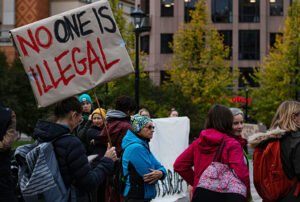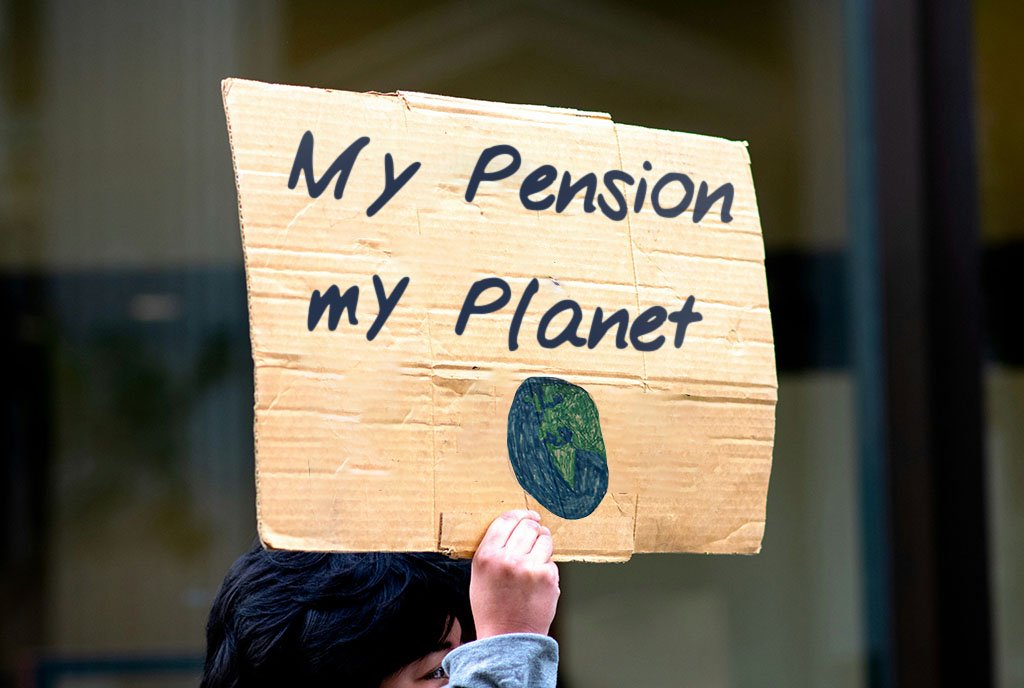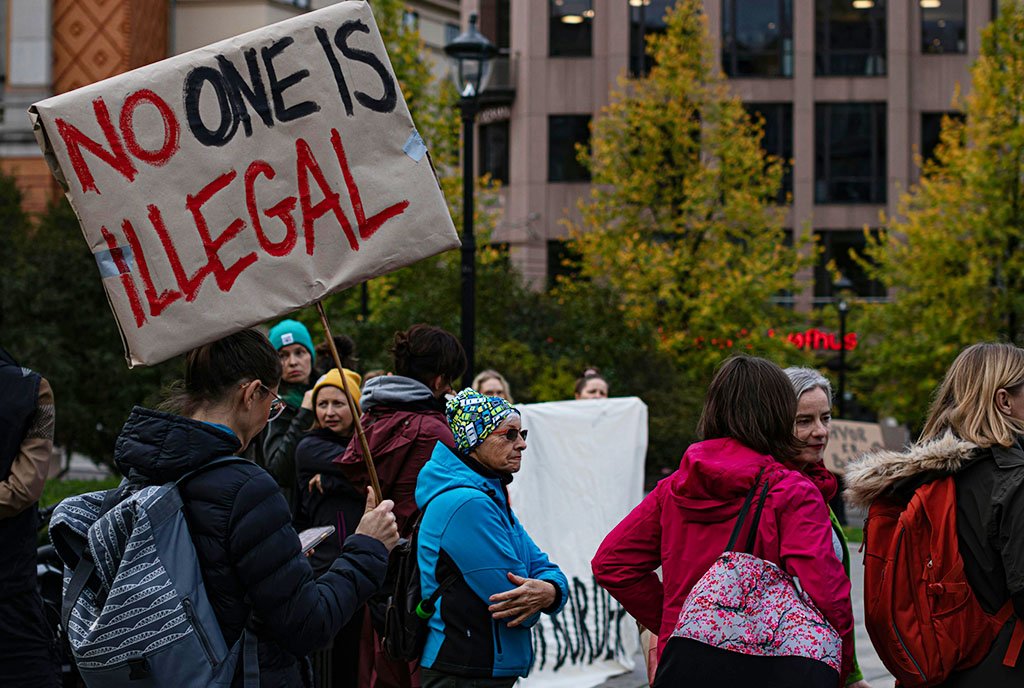

What is social justice philanthropy? Earlier this year, Resource Generation, a network of young high-net-worth donors, held a series of webinars addressing this question. The network defines social justice philanthropy as giving that “focuses on the root causes of social, racial, economic and environmental injustices.” The point, in essence, is to use the resources that often have accumulated precisely because of those injustices to upend the systems that allowed the accumulation of wealth to occur in the first place.
But how can this be done effectively? Given that philanthropic capital is rooted in inequitable resource extraction, the inherent conflicts are obvious. Moving toward this justice objective despite those tensions and contradictions was a central theme in a multipart webinar series the group organized this past May and June.
In the conservations, speakers highlighted innovations in social justice philanthropy. At the same time, they readily acknowledged limits and contradictions. A common thread was a call to advance economic systems change by leveraging philanthropic resources to seed a more democratically controlled solidarity economy.
Who Is Resource Generation?
As NPQ has previously covered, Resource Generation defines itself as a “multiracial membership community of young people (18–35) with wealth and/or class privilege committed to the equitable distribution of wealth, land, and power” whose focus is to educate, organize, and agitate. In other words, it seeks to move young people who have grown up in privilege to act to counter the conditions that created their wealth.
Founded in the late 1990s, Resource Generation’s network has grown significantly. In 2022, network members, organized in chapters across roughly two dozen cities, donated over $99 million directly to movement groups, influenced $22 million in family donations, and invested another $15 million in alignment with the network’s “transformative investment principles” (which focus on directing resources to support a solidarity economy).
The numbers are impressive for a group of young activists, but how are the inherent tensions negotiated? In Resource Generation’s webinar series—an event notable for the panelists’ refreshing level of introspection—over a dozen speakers addressed many hard questions. Three key themes were:
- How individuals can develop their own social justice philanthropy strategies
- How to address the rising role played by donor-advised funds (DAFs)
- How philanthropy might be regenerative and serve as a tool for reparations
Addressing Giving Tensions at the Individual Level
The first session focused on individual giving and included three people who have been active in the Resource Generation network; two of them had recently “aged out” of the network while one was still a member. Much of the information was highly personal—and for that reason, people’s names are omitted in this section. Some key strategies emerged to address the tensions inherent in individual giving for social justice:
Find your community and work as a team: One speaker explained how she sought out allies and hired a team of three advisors to disburse $3.5 million to about 35 organizations. These three advisors, all movement organizers themselves, were each given a budget to subcontract as needed to vet organizations and were empowered to make decisions regarding disbursements. The method, in short, was to democratize giving as an individual donor by setting general principles and then ceding decision-making authority to movement leaders. The advisory team and the donor settled on broad areas of alignment, but then each advisor had autonomy to make donations without having to get approval from either the donor or the two other advisors. The main message—emphasized by others as well—is that social justice philanthropy requires the knowledge of multiple people and only works as a team sport.
Align giving with your “money story”: The term “money story” is used widely in the social justice philanthropy world. Broadly speaking, it means to focus giving in a way that compensates for how your family’s wealth was accumulated originally. At the webinar, two panelists shared parts of their own money stories. One, for example, sought to undo the harm caused by their parents’ real estate business by investing in community ownership of real estate. Connecting giving to remedying harm makes explicit the “why” of giving—and can help inspire other family members to join in, increasing the quantity of resources tapped to address the harm.
Sometimes foundations also apply a similar lens. A prominent example comes from the Minnesota-based Northwest Area Foundation, which operates in an eight-state region and dedicates 40 percent of its grants to Native American organizations. CEO Kevin Walker is quite clear on the “why” of the foundation’s commitment. As Walker explains, the foundation’s wealth comes from the profits made by James P. Hill, owner of the Great Northern Railway that connected Minneapolis and Seattle. As Walker details, “The Native nations of this region found themselves on the losing end of the Foundation’s origin story….[Today, we are] placing Native people at the center of our approach, not at the periphery [as] an act of repair.” In doing this, the foundation formally recognizes that the source of their wealth came from doing harm to Indigenous communities and develops a strategy to undo that harm. The explicitness of this connection helps shift giving from a “do good” framework to a social justice framework rooted in repair.
Cede control and communicate: One speaker remarked that there was “audible joy from the grantees when they learned that there was no expectation to be part of a donor cohort or send grant reports.” This resonates with broad sentiment in the field (and past NPQ coverage) of the importance of multiyear unrestricted funding in advancing social justice work and how cohorts, if they’re not designed well, can be draining for the community groups involved, often demanding valuable time that’s already scarce. This speaker added, however, that it was important to ask potential grant recipients what they need because the answers are not always the expected ones. For instance, this person found that many recipients opted for a single lump-sum donation instead of multiyear support because a single payment reduced transaction fees from fiscal sponsors.
Can DAFs and Social Justice Philanthropy Mix?
A second theme centered on donor-advised funds, or DAFs. It is hard to overstate the importance of DAFs in philanthropy today. A report from the National Philanthropic Trust finds that in 2021, total DAF assets were over $234 billion. Just to put that in perspective, total US giving in 2021 was $517 billion, so the DAF asset base is almost half of annual giving by individuals, corporations, and foundations combined.
Sign up for our free newsletters
Subscribe to NPQ's newsletters to have our top stories delivered directly to your inbox.
By signing up, you agree to our privacy policy and terms of use, and to receive messages from NPQ and our partners.
That $234 billion figure for DAFs in 2021, by the way, is more than twice as high as the 2017 level; this increase may in part be a product of the passage of the Republican tax bill of 2017, which raised the standard deduction and thus made charitable deductions financially disadvantageous unless they exceeded the standard deduction amount. This means that a person who makes consistent donations that don’t exceed the standard deduction amount will receive a charitable tax deduction of zero. However, a person who makes a lump-sum donation of multiple years’ worth of donations to a DAF will exceed the standard deduction amount considerably—and receive a sizeable tax benefit.
As the National Philanthropic Trust suggested back in 2018, “One strategy to…maximize your tax deduction is to make larger contributions in less frequent intervals into a DAF. [emphasis in the original] ‘Bundling’ your gifts—contributing two-to-three years’ worth of charitable gifts at once to a DAF—allows you the flexibility to claim a charitable deduction in year one and to grant the funds out over time.” The National Philanthropic Trust is not alone in this recommendation—such advice also comes from community foundations, wealth advisors, and financial services companies, to name but a few.
DAFs are important in the world of social justice philanthropy too. Recently, Resource Generation published a guide about DAFs, titled Donor-Advised Funds: A Tool for Redistribution or a Vehicle for Wealth Hoarding?
It’s fair to say that Resource Generation as an organization is skeptical of DAFs. Chuck Collins, who has written in NPQ on the need to strictly regulate DAFs and has argued persuasively about how DAFs often serve as a tool to empower the wealthy (allowing people to claim tax deductions without any time limit on when donations are actually made), was a guest speaker and spoke on these themes. Yet many Resource Generation members give to and through DAFs. Indeed, the organization’s own guide offers many reasons DAFs can (sometimes) support social justice philanthropy. The guide states:
- DAFs can keep you committed to your redistribution goals.
- DAFs can help keep you organized.
- DAFs can help you to get money out the door faster.
- DAF fees give you an additional opportunity to support a social justice funder you are currently funding (if the account manager is mission-aligned).
- DAF donations may be easier to process and preferable for beneficiary organizations (by avoiding credit card and related transaction fees).
- DAFs can be an easy way to redistribute gift stocks.
The program was designed to address two key questions: 1) How are you in service to the movement? and 2) How is that built into your structures and systems?
DAFs, the guide notes, are also often a useful way for families to organize giving without having to set up a family foundation. It also offers advice on how to minimize the downsides of DAFs, such as by committing to paying out money quickly and having accounts managed by mission-aligned organizations.
The speakers (other than Collins) were from progressive foundations that sought to speed the distribution of funds from the DAFs they managed into the hands of social justice movement groups. The most interesting approach offered was from Seeding Justice, an Oregon-based foundation, which has created what it calls a Donor-In-Movement Fund. As Executive Director Se-ah-dom Edmo explained, if an individual sets up a donor account at Seeding Justice, “[the account] immediately goes through a 50-40-10 split: 50 percent goes to our grassroots grantmaking committee, 10 percent goes to support Seeding Justice’s operation, and 40 percent goes to mission-aligned organizations of the donor’s choosing.” If at the end of the first 12 months there’s still money in the account, it goes through a 50-40-10 split again and will be halved each year. And if the account level falls below $5,000, the money simply is donated to Seeding Justice.
Effectively, the product offered by Edmo’s organization is a hybrid of direct donations and a DAF. Specifically, half the money is immediately donated to movement organizations and 10 percent supports the administration of the program, while donors can spend up to 12 months deciding where the remaining 40 percent of the money goes. The product is heavily influenced by the #HalfmyDAF campaign, which was launched by David and Jennifer Risher in 2020.
Edmo noted the program was designed to address two key questions: 1) How are you in service to the movement? and 2) How is that built into your structures and systems? In their marketing materials, Seeding Justice identifies its aim as creating a community in which donors can “be grounded, to continuously learn, and to be only a phone call away when those unpredictable political moments that can define social justice movements occur.”
“If the people that are working in your foundation are the same people that were working there before, how are you expecting different results?”
Can Philanthropy Move Toward Repair?
The series culminated with a conversation on “Moving Towards Reparations and Regenerative Philanthropy.” Participating on the panel were Charles Long of the Movement for Black Lives, Jess Housty of the Right Relations Collaborative (led by First Nations communities in British Columbia), philanthropic advisor Leila Zainab, and Aria Florant of Liberation Ventures. Some key themes emerged:
Changing who is at the philanthropic table: Long contended that for social justice philanthropy to be effective, the who in philanthropy must fundamentally change to reflect BIPOC communities. “If the people that are working in your foundation are the same people that were working there before, how are you expecting different results?” Long asked rhetorically. Changing the decision-makers, he contended, “is the change that fundamentally will move the dial forward.” As NPQ has covered, a number of Black funds are emerging as one effort to implement this philosophy.
Housty made a similar point about Indigenous communities. Their group accepts contributions from funders who commit to making multiyear unrestricted financial commitments to a pooled fund that the council of Indigenous “aunties” manages. Housty added, “We are trying to center an abundance mindset and a relational approach” that allows “Indigenous models of governance and gift economies to thrive and weave the way we’re working together.”
Embracing a broad view of reparations: Both Thomas and Florant of Liberation Ventures emphasized that while reparations include compensation, the point is repair. Thomas noted that M4BL defines reparations as consisting of five things: 1) cessation of the harm, 2) restitution (righting the wrong), 3) compensation, 4) satisfaction (acknowledgement of harm, such as an official apology), and 5) rehabilitation (such as support for trauma). As Florant pointed out, these principles are derived from a United Nations-adopted human rights framework.
Redefining our economy: All of the speakers saw building a solidarity economy as a central component of social justice philanthropy. This is true because if there is to be an escape route from dependence on philanthropy, it will require movements to become generators and stewards of their own resources.
Zainab observed that “poor people have this technology of sharing resources, of making a dollar stretch, of feeding each other, of clothing each other, of ride sharing, of doing what we call this cooperative economics that we do so well, solidarity economies.…That’s what needs to be uplifted.” Florant identified shifting ownership and wealth building as central part of reparations work. Thomas emphasized land ownership and self-determination. Housty noted that for her community wealth is determined “by how much you give away” and added that “it is possible to center other conceptions of wealth than the ones prioritized under capitalism.”
The Limits and Power of Social Justice Philanthropy
“[U]sing wealth-dependent philanthropy to undo wealth inequality remains full of tensions and contradictions…”
Throughout the series, two things were clear—one, there are many ways that social justice philanthropy, provided it’s in right relationship to community groups, can support economic and racial justice. There was also, however, widespread recognition of its limits.
At one session, Noelene Powell of the Urgent Action Fund for Women’s Human Rights for Asia and the Pacific noted, “Our greatest hope would be that ultimately philanthropy doesn’t have to exist, that it’s no longer necessary, because civic space and democratic norms are strengthened and protected…there are employment laws and policies that center workers’ rights and, of course, the preservation of nature.” But in today’s imperfect world, she didn’t doubt that philanthropy remained necessary, despite all its flaws. The DAF session, too, centered on a similar theme.
In short, there’s broad recognition that social justice philanthropy remains an imperfect tool. Certainly, the field is innovating; it’s hard to imagine conversations like the ones covered here taking place five years ago. Still, using wealth-dependent philanthropy to undo wealth inequality remains full of tensions and contradictions—holding new visions for the future, but built on problematic structures from the past.












